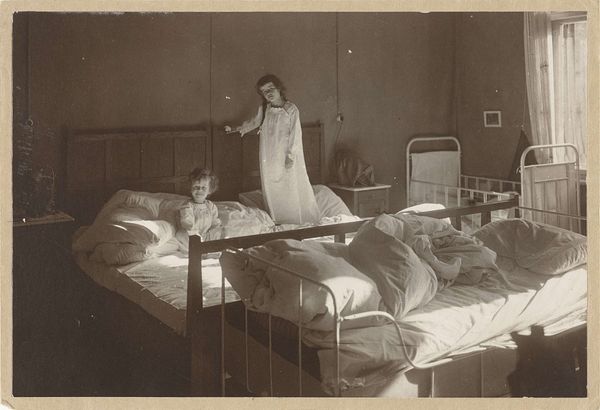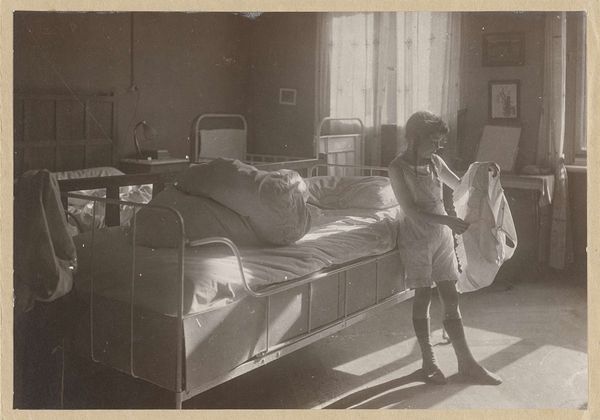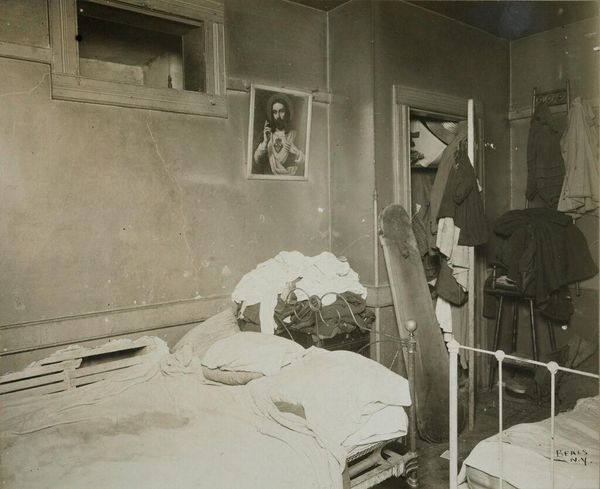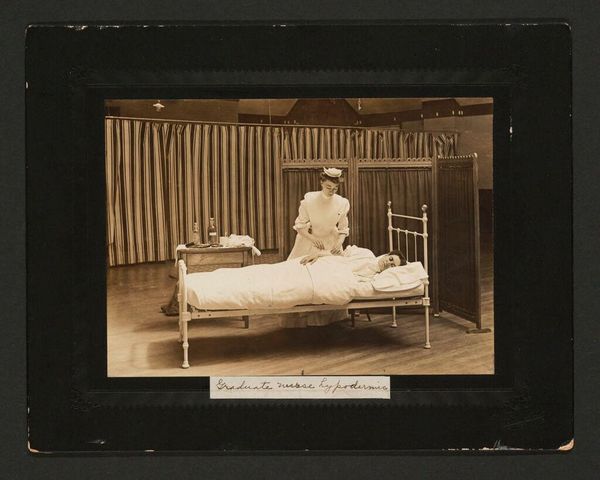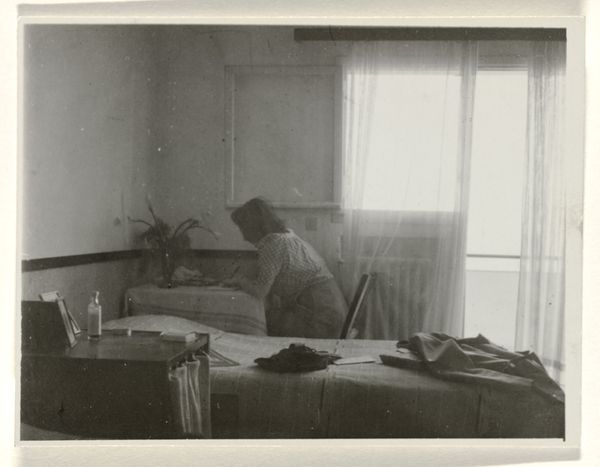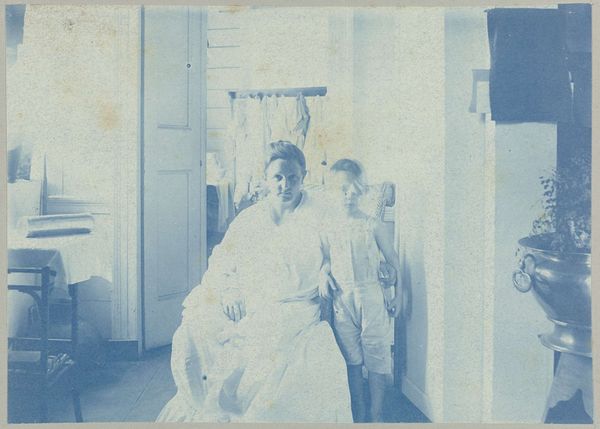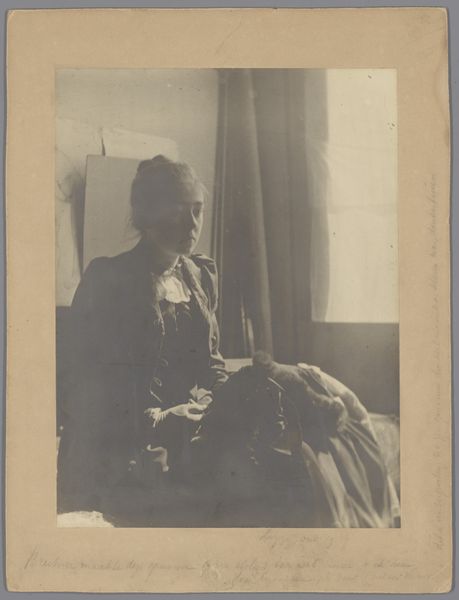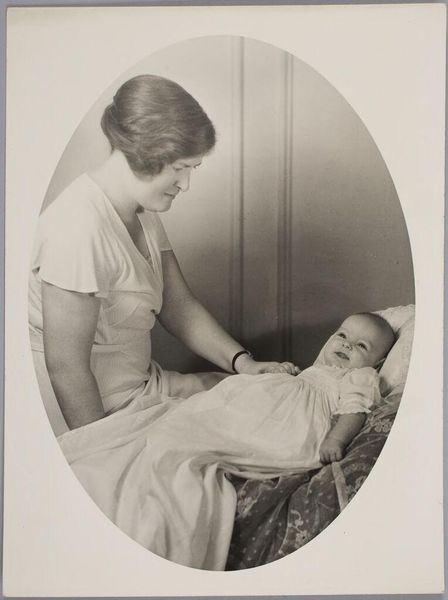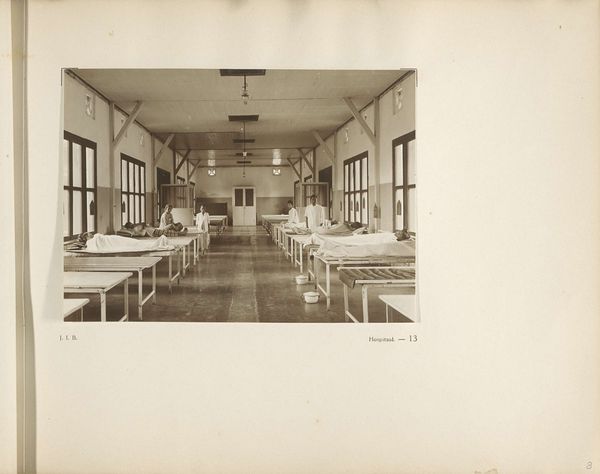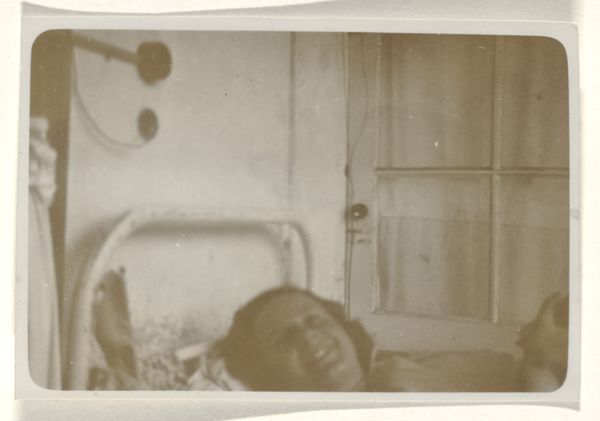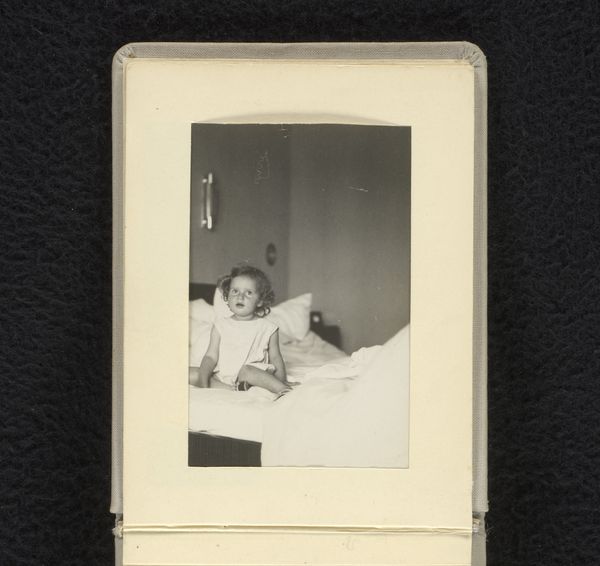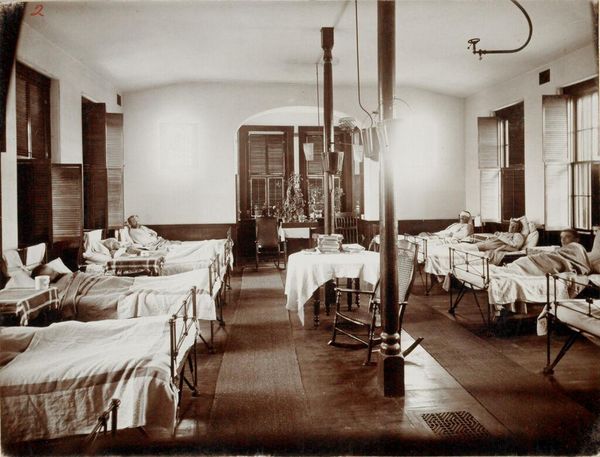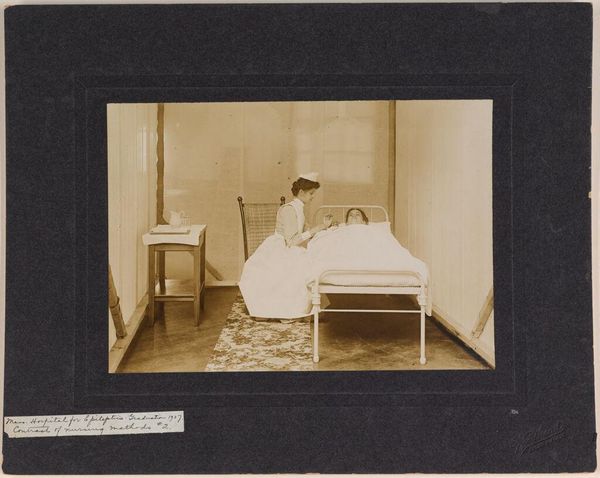
Eckart Titzenthaler, zoon van de fotograaf, in de slaapkamer van het woonhuis in de Friedrichstrasse, Berlijn 1917 - 1918
0:00
0:00
photography
#
print photography
#
archive photography
#
photography
#
historical photography
#
genre-painting
Dimensions: height 109 mm, width 78 mm, height 111 mm, width 85 mm
Copyright: Rijks Museum: Open Domain
Curator: Here we have a photograph from between 1917 and 1918, titled 'Eckart Titzenthaler, zoon van de fotograaf, in de slaapkamer van het woonhuis in de Friedrichstrasse, Berlijn', which translates to 'Eckart Titzenthaler, son of the photographer, in the bedroom of the house in Friedrichstrasse, Berlin' and it was taken by Waldemar Titzenthaler. Editor: It’s quite a moody photograph, isn't it? The soft sepia tones and the subject matter, a child in a bedroom, give it an intimate, almost melancholic feel. The light is diffused, making the textures in the bedding and the child’s nightgown quite tactile. Curator: Precisely. Waldemar Titzenthaler was known for capturing scenes of everyday life in Berlin. This photograph offers us a glimpse into the domestic sphere during a tumultuous period in German history, the end of the First World War. Editor: It's interesting how the mundane aspects of life—like putting a child to bed—continued despite the surrounding chaos. What strikes me, though, is the very deliberate crafting of the image itself. The quality of the print; you can almost feel the weight and weave of the paper used, connecting the photographic print back to material means of production. Curator: Certainly. Photography in this era was still a relatively involved process, not the instantaneous image-making we know today. The photographer's choice of subject and the staged domesticity reflected the cultural values of the time, presenting a carefully constructed image of family life. Editor: But even staged, there is still evidence of manual production—from posing the child to the final print in sepia tone. The final product offers this view of "genre painting," while showcasing how labor is rendered invisible within the domestic and the aesthetic spaces it depicts. Curator: These images, seemingly simple at first glance, acted as social documents, shaping and reinforcing ideas about childhood, family, and national identity in the aftermath of war. Editor: Absolutely. When considering the photograph today, we can think about both the moment and how images operate in constructing larger ideas, beyond that particular child in that particular room in Friedrichstrasse. Curator: A quiet reminder of personal stories playing out against the grand narratives of history. Editor: A material echo connecting then and now.
Comments
No comments
Be the first to comment and join the conversation on the ultimate creative platform.
